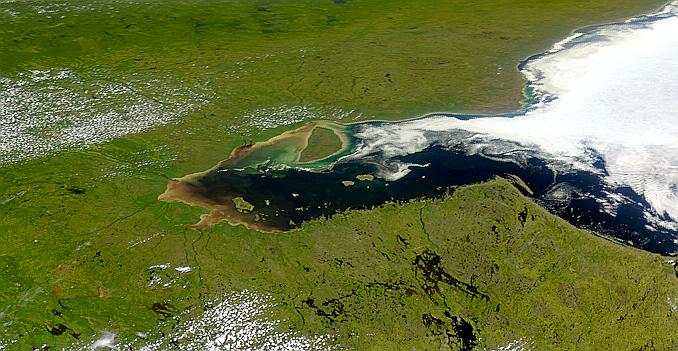
James Bay, Canada. Image courtesy NASA
The southern limit of permanently frozen ground has receded 80 miles north in the past 50 years in Canada—suggesting that permafrost in the James Bay region will completely disappear in the near future.
The researchers measured the retreat of the permafrost border by observing hummocks known as “palsas” that form naturally over ice contained in the soil of northern peat bogs. Palsas harbor distinct vegetation: lichen, shrubs, and black spruce.
Aerial photos taken in 1957 showed palsas present in seven bogs lying between the 51st and 53rd parallels. By 2004, palsas were present in only two bogs. In 2005, the researchers assessed that the number of palsas in these two bogs had decreased over the course of one year by 86% and 90% respectively.
Helicopter flyovers between the 51st and 55th parallels reveal the palsas are in an advanced state of deterioration over the entire James Bay area.
Coauthor Serge Payette notes the average annual temperature of the northern sites he’s studied for more than 20 years has increased 2 degrees Celsius (3.6 degrees F). He tells the Université Laval:
“If this trend keeps up, what is left of the palsas in the James Bay bogs will disappear altogether in the near future, and it is likely that the permafrost will suffer the same fate.”
The paper is in Permafrost and Periglacial Processes.









